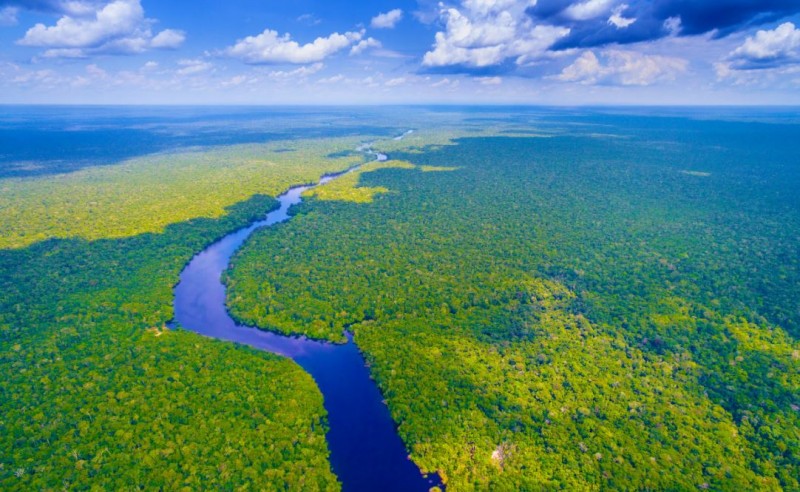
Introduction
The Amazon rainforest, often referred to as the "Lungs of the Earth," plays a critical role in sustaining life on our planet. It is a vast, biodiverse ecosystem that covers approximately 5.5 million square kilometers across nine South American countries. In this article, we will explore the significance of the Amazon rainforest and its remarkable contribution to the world's oxygen supply.
1. The Importance of Oxygen
Oxygen is essential for the survival of all living organisms. It plays a crucial role in cellular respiration, the process by which cells convert nutrients into energy. Additionally, oxygen enables the combustion of fossil fuels, powers transportation systems, and sustains the delicate balance of our planet's atmosphere.
2. Overview of the Amazon Rainforest
The Amazon rainforest is the largest tropical rainforest on Earth, covering vast portions of Brazil, Peru, Colombia, Bolivia, Ecuador, Venezuela, Guyana, Suriname, and French Guiana. It is characterized by its dense vegetation, towering trees, and a remarkable array of plant and animal species.
3. Biodiversity in the Amazon
The Amazon rainforest is a biodiversity hotspot, harboring an estimated 10% of the world's known species. It is home to countless plant species, including valuable medicinal plants, and provides habitat for diverse wildlife such as jaguars, sloths, macaws, and anacondas. The interdependence between these species is crucial for maintaining a healthy and balanced ecosystem.
4. The Photosynthesis Process
Photosynthesis is the fundamental process through which plants, including those in the Amazon rainforest, convert sunlight, water, and carbon dioxide into oxygen and glucose. Chlorophyll, the pigment responsible for the green color of leaves, captures sunlight, enabling photosynthesis to occur.
5. The Amazon's Oxygen Production
Contrary to a common misconception, the Amazon rainforest is not the primary source of the world's oxygen supply. However, it does play a vital role in oxygen production. The dense vegetation and vast expanse of the rainforest contribute to significant oxygen generation through photosynthesis. It is estimated that the Amazon rainforest produces over 20% of the world's oxygen supply.
6. Factors Threatening the Amazon Rainforest
The Amazon rainforest faces numerous threats, primarily driven by human activities. Deforestation, illegal logging, agricultural expansion, and mining operations pose severe risks to the delicate balance of this vital ecosystem. These activities not only disrupt the oxygen production but also lead to the loss of biodiversity, increased greenhouse gas emissions, and irreparable damage to indigenous communities.
7. The Implications of Amazon Deforestation
The consequences of deforestation in the Amazon are far-reaching. As trees are cleared, the capacity for oxygen production decreases, leading to a reduction in the global oxygen supply. Additionally, deforestation releases stored carbon dioxide back into the atmosphere, contributing to climate change. The loss of biodiversity also disrupts essential ecological processes, making the ecosystem more vulnerable to further degradation.
8. Conservation Efforts in the Amazon
Recognizing the critical importance of the Amazon rainforest, international organizations, governments, and NGOs have been working to protect and preserve this unique ecosystem. Conservation initiatives focus on establishing protected areas, implementing sustainable land use practices, and enforcing strict regulations against illegal activities. These efforts aim to safeguard the Amazon's oxygen production and maintain its ecological balance.
9. The Role of Indigenous Communities
Indigenous communities residing in the Amazon rainforest have a deep understanding of the land and its resources. Their traditional knowledge and sustainable practices are crucial in preserving the rainforest's oxygen-producing capacity. Empowering these communities and involving them in decision-making processes are essential steps towards effective conservation.
10. Sustainable Practices and Reforestation
Promoting sustainable practices, such as agroforestry and responsible land management, can help mitigate the negative impacts of human activities in the Amazon. Reforestation initiatives are also vital for restoring areas affected by deforestation. Planting new trees not only aids in oxygen production but also provides habitat for wildlife and helps combat climate change by sequestering carbon dioxide.
11. The Global Impact of Amazon Preservation
Preserving the Amazon rainforest goes beyond regional concerns—it is a global imperative. The interconnectedness of the Earth's ecosystems means that the health of the Amazon affects the entire planet. By protecting this vital resource, we ensure the continuity of oxygen production, mitigate climate change, conserve biodiversity, and safeguard the livelihoods of indigenous communities.
Conclusion
The Amazon rainforest is a breathtaking marvel that sustains life in remarkable ways. While it may not be the sole provider of the world's oxygen supply, its contribution is undeniably significant. Protecting the Amazon is crucial for maintaining the delicate balance of our planet's ecosystems and securing a sustainable future for generations to come.
SC Sets Hearing Date for Sisodia's Interim Bail Plea in COVID-19 Protocol Violation Case
Nepal Bans 'Non-Essential' Helicopter Flights After Tragic Crash